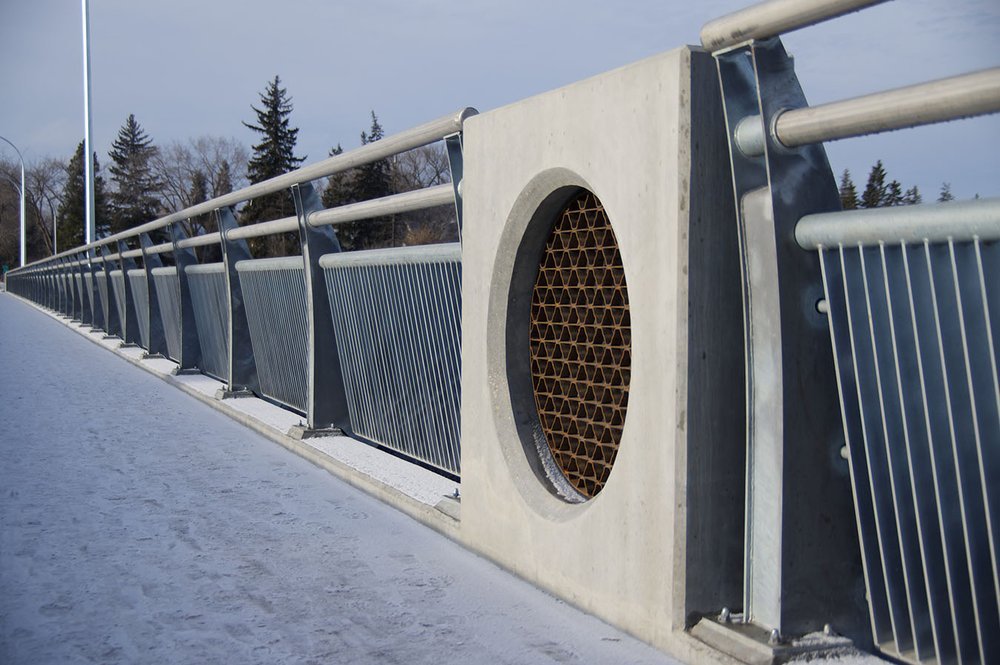United Nations features Sherilee Harper from University of Alberta
February 11 is International Day of Women and Girls in Science. Did you know women are typically given smaller research grants than their male colleagues and, while they represent 33.3% of all researchers, only 12% of members of national science academies are women. In cutting edge fields such as artificial intelligence, only one in five professionals (22%) is a woman.
A significant gender gap has persisted throughout the years at all levels of science, technology, engineering and mathematics (STEM) disciplines all over the world. Even though women have made tremendous progress towards increasing their participation in higher education, they are still under-represented in these fields.
One of the women featured by the United Nations is Sherilee Harper, Associate Professor in the School of Public Health at the University of Alberta. Her research investigates associations between weather and Indigenous health in the context of climate change. She collaborates with Indigenous partners to prioritize climate-related health actions, planning, interventions, and research.
Harper co-leads the Indigenous Health Adaptation to Climate Change (IHACC) program, an international research initiative that works closely with Indigenous peoples and their organizations in the Canadian Arctic, Ugandan Impenetrable Forest, and the Peruvian Amazon. The program aims to utilize science and Indigenous knowledge to strengthen health systems in a rapidly changing climate, within three areas: food security; malaria; and foodborne and waterborne disease. Learn more https://www.un.org/en/observances/women-and-girls-in-science-day?mc_cid=ac785272d1&mc_eid=b02c6f60ed
Are Hawrelak Park trees the canary in the coal mine
Bob Priebe, former Director of Parks Planning at the City of Edmonton, asks in a recent post if the proposed Hawrelak Park tree cutting may be the proverbial ‘canary in the coal mine’. He says “The loss of trees at Hawrelak represents a symptom, the expansion of neoliberal policy applied to community projects, that prioritize efficiency of the construction process, and minimizing the cost of government.
The real and human cost of relocating festivals borne by our park co-production partners, festival goers and park visitors is hard to quantify, but nevertheless real. It appears there was no single voice for parks, it was passed between silos.
I have confidence in this group of councillors who have demonstrated a broad people orientated approach to sustainable city building. Has that message been adopted by the Administration?” Read complete piece at https://robertpriebe.substack.com/p/william-hawrelak-park-closure-are
Three easy to grow wildflowers plus one challenging plant
Wild Bergamot, Slender Blue Beardtongue and Golden Aster are easy to grow perennial native plants. They can be grown from seed but will be small plants the first year because they like to establish a strong root system before they put energy into top growth. In their second year they put on a nice growth spurt and flower.
Wild bergamot is a member of the mint family but will not spread like mint. This is a bushy, medium-tall plant that adds more flowering stems each year. Slender Blue Beardtongue is a short, spring-blooming plant and the blooms come in an array of shades of blue, purple and even pink. Golden Aster is a small plant with sunshine yellow flowers and soft grey-green leaves.
Purple Prairie Clover are medium height and have fine textured foliage and narrow spikes of vivid pink flowers. If you would like to take on the challenge of growing this vibrant flower you will need a south-facing sunny slope, and sandy soil. Add some gravel and a good amount of compost to the planting hole. Plant information https://cdn.sanity.io/files/d59screl/production/a09af6fe35d8efb0ec2e662c3f03009f8349a5ac.pdf
ABMI hiring up to 40 summer field techs
Are you interested in being part of a world-class biodiversity monitoring program? Do you want to spend your summer travelling through Alberta’s landscapes, contributing to understanding of Alberta’s natural world, potentially helping discover new species, and getting paid for all of it? Then apply by February 27 to the Alberta Biodiversity Monitoring Institute (ABMI)
Summer field technologists are the backbone of the ABMI. Every spring the ABMI’s Monitoring Centre hires field technologists to collect information on the state of biodiversity across the province of Alberta. This information is used by various stakeholders, including government and industry, to facilitate responsible management of Alberta’s living resources.
Summer field technologists conduct surveys at confidential ABMI site locations. Successful applicants may work in the Ecosystem Health Program, or Oil Sands Monitoring program. Sites are located across a wide range of terrain, from boreal forests in the north, to the Rocky Mountains in the west, to prairie and grasslands in the south. Information https://abmi.ca/home/careers/field-monitoring-positions.html?mc_cid=ac785272d1&mc_eid=b02c6f60ed
Let’s rethink Hawrelak Park plan
Sandra writes “Cutting down trees that help the environment is unacceptable. Thank you for posting.”
now & then by Faye HeavyShield, 102 Avenue Bridge. Doyle C. Marko photo. https://www.edmontonpublicart.ca/#!/details/213
Comment or contribution
Please note that articles may not reflect the position of NSRVCS. River Valley News is meant to be a clearinghouse for the wide variety of opinions and ideas about Edmonton’s River Valley. Email river valley photos, event information, comments, or questions to nsrivervalley@gmail.com
Sincerely yours,
Harvey Voogd
North Saskatchewan River Valley Conservation Society
780.691.1712






